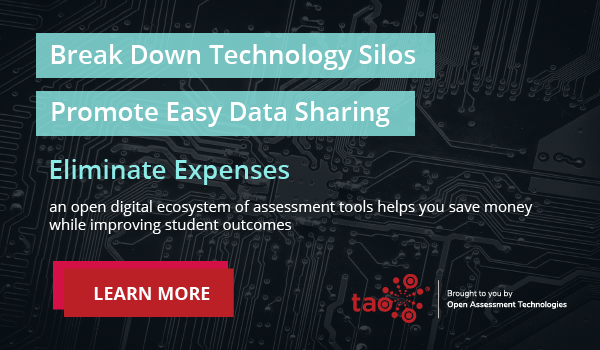Over the last five years, student reading scores in the United States have been declining, this decline is even more pronounced after 3 years of a global pandemic. With 35% of students in grades K-2 categorized as having literacy skills far below grade level and an ever-widening gap in literacy skills for students in poverty, schools are beginning to re-examine how they teach students to read.
One such approach that has been gaining traction in both schools and the legislature is a reading strategy called the Science of Reading. The Science of Reading has been studied for years and has shown a high level of success in students of all ages.
What is the Science of Reading, and How did it Start?
At its core, the Science of Reading is a research-based, 5-tiered approach, designed to accelerate student reading and improve student reading comprehension. The 5 elements that make up the Science of Reading include:
- Phonological awareness – students can form sounds by looking at various syllables within a word.
- Phonics – students recognize that different letter combinations make different sounds, and they learn to spell words and recognize words in the text.
- Fluency – students learn to read and re-read for automaticity, this allows students to read quickly and with greater comprehension.
- Vocabulary– Students are explicitly taught high-level academic vocabulary within the context of written or oral discourse. Students are taught to use contextual clues to decipher new words.
- Text comprehension – Students learn to look at the text from a higher level, making inferences, drawing conclusions, and building greater meaning from the text.
How did the Science of Reading come into focus?
While the Science of Reading has been a part of curricula for years, it became part of the national conversation in the United States in 2013 when Mississippi overhauled its reading education program and installed the Science of Reading as the centerpiece of its new curriculum. Six years after implementing the overhaul Mississippi students had seen great gains in their reading assessments and literary assessments.
After seeing the positive results from Mississippi, and facing similar challenges around student literacy, other states began to adopt the Mississippi model as part of their curriculum. Today, 28 states and the District of Columbia have integrated the Science of Reading into their teaching mandates.
Science of Reading Instruction vs. Balanced Literacy Instruction
In reading instruction, there are two main schools of thought, one being Balanced Literacy instruction and the other being the Science of Reading instruction. While the two programs do share similarities, they also have a few key differences.
Balanced Literacy programs operate under the premise that students need to be exposed to books and larger texts throughout their learning to become comfortable with reading. In Balanced Literacy, students are encouraged to determine the meaning of new words using the context of the sentence or visual aids to decide what a new word means. However, this can lead students to focus less on the actual word and develop misconceptions when they incorrectly substitute a known word.
This is in sharp contrast to programs utilizing the Science of Reading. The Science of Reading focuses on explicitly phoneme and phonics instruction which empowers students to decode any word that they come across. By enabling students to decode quicker and develop fluency, the Science of Reading increases the rate of reading growth.
Challenges to Implementation
There are a vast array of challenges when it comes to implementing the Science of Reading, the largest of which may be changing the teacher’s philosophy around effective reading instruction. Many educators are devoted to their philosophy on reading, even if it is incorrect. It can take a couple of years for a teacher to come around to seeing the benefits of using the Science of Reading.
Another challenge is that it is a difficult program to learn and teach effectively. Teachers need to have a solid foundation in phonemes and phonics and resist the temptation to move on to bigger texts before a student is ready. There has to be complete cohesion within the school, students cannot go from learning phonics in the morning to guessing word meaning in the afternoon.
3 Strategies for Approaching the Science of Reading
The Science of Reading is a huge paradigm shift for many educators. This can make shifting to the research-based approach of the Science of Reading seem overwhelming, however, it doesn’t have to feel this way, here are 3 strategies to ease into the Science of Reading:
-
Go slow to go fast
For both students and teachers, the foundation of phonics and phoneme awareness must be well developed before moving on to complex texts. This isn’t to say that students are not exposed to complex ideas, however, high-level vocabulary should be built orally before seeing it in text.
This means that teachers may need to slow down and take the time to teach decoding explicitly. In doing so, students can become self-sufficient decoders and, in time, they will be able to read with fluency and comprehension much quicker than before.
-
Focus on oral language
The focus on oral language is a huge component of the Science of Reading. Humans are not programmed to read naturally, however, we are programmed to develop complex speech patterns and language. This means that students may have the capability of forming a complex sentence and using high-level vocabulary but those skills will show up orally first rather than in reading or writing.
-
Meet the students where they are at
As with anything in learning, students will move at different paces. Educators can adapt the Science of Reading curriculum to meet students where they are at. Some students in a class may be focusing on phonics while others may already be working on reading comprehension. The Science of Reading is designed to build upon itself, there is no rush and there are no shortcuts. By being consistent, and sticking to the process, students will learn to read.
How EdTech and Assessment Can Help
The rapid inclusion of education technology into the classroom can help teachers to implement the Science of Reading using Universal Design principles to offer students a more personalized learning experience. The use of formative assessment tools can help educators to assess literacy and reading more frequently to ensure that teachers have the most up-to-date data and that students are being appropriately challenged.
While traditional teaching methods make it difficult to meet the needs of all students or to even know where student skills are at, software that supports adaptive testing can help engage students in literacy activities by presenting questions targeted to their skill level, based on their performance as they advance through a test. Taking this approach is one way for educators to meet students where they are at, a key strategy for supporting the Science of Reading as mentioned above. Additionally, many technology platforms allow teachers to group students, assign content, and even interact with students in real-time, and at a targeted level.
An assessment solution like TAO that also supports audio-based question types makes it possible for students to record themselves reading a passage or snippet of content within a test so that educators can more easily assess reading comprehension.
By incorporating EdTech into a reading program teachers can not only accelerate student reading and literacy, but they also are developing 21st-century digital literacy skills that will help students outside of the classroom as well.
Closing Thoughts
Teaching reading is one of the most important aspects of our education system. However, for years students have been falling behind in literacy and reading in the United States, this is especially true for students in poverty. The Science of Reading program is designed to empower and build readers from the beginning. Relying on decades of data and research, the Science of Reading is quickly becoming one of the most used methods for teaching literacy.
For some teachers, this may seem overwhelming, however, technology can help in the transition to using the Science of Reading. By utilizing an online platform, such as the TAO assessment platform, teachers can seamlessly integrate literacy assessment and reading assessment into daily lessons and meet each student where they are at. To learn more about how Open Assessment Technologies can help your school to lead the way in the Science of Reading, reach out here.


